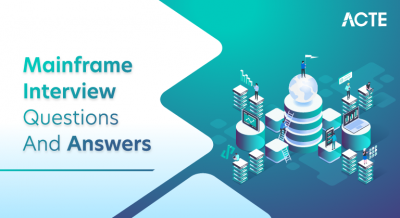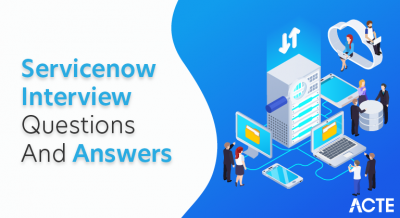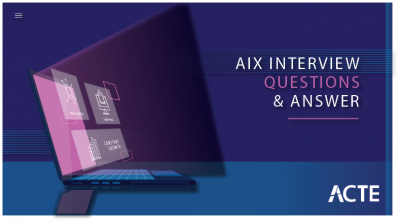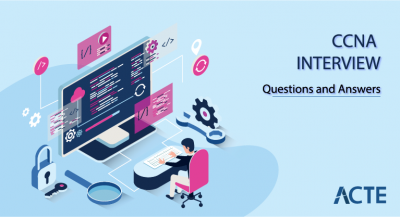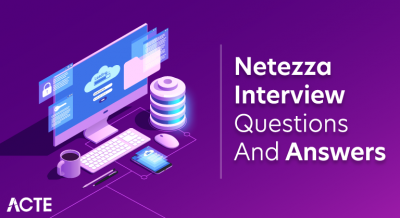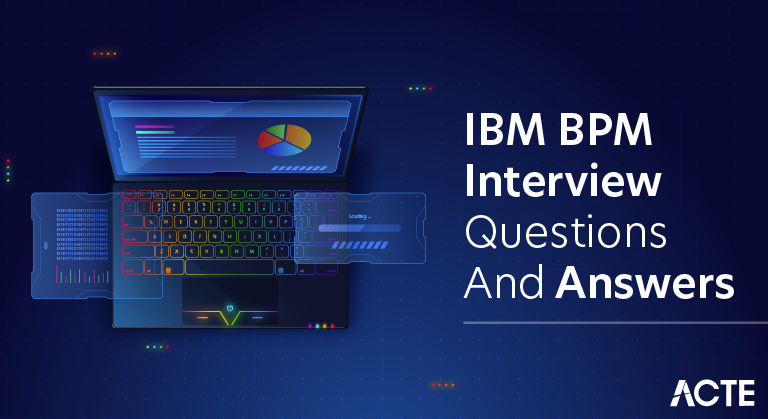
IBM BPM (Business Process Manager) is a comprehensive solution for optimizing and automating business processes. With intuitive tools for process modeling and design, it enables the deployment and execution of well-defined workflows. The platform integrates seamlessly with diverse enterprise systems, fostering efficiency and data utilization. Offering real-time monitoring and analytics, it empowers organizations to identify bottlenecks and enhance process performance. IBM BPM supports adaptive and dynamic processes, allowing businesses to respond quickly to changing requirements. Its capabilities extend to mobile access, social collaboration, and robust security, making it a versatile solution for businesses across various industries.
1. What do IBM BPM Variables (Business Objects) mean?
Ans:
In Team works, business objects which is also referred to as variables, represent data that gives a process that is now operating its business context. Moreover, there are two categories of variables exist. Firstly, private input and second thing could be the output. Furthermore, it has distinct scopes for simple and complex variables. Such a variable’s value cannot be changed.
2. Which are IBM BPM’s main constituents?
Ans:
In response, the following are crucial components of IBM BPM:
- Process coordinator
- Process engineer
- Center of Process
- Console for the process Center
- Warehouse Performance Data
- Portal for processes
3. What is the purpose of each type of gateway that IBM BPM offers?
Ans:
Exclusive Gateway (XOR) : Used for decision points where only one outgoing path is taken based on a condition.
Inclusive Gateway (OR) : Allows multiple outgoing paths to be taken based on conditions.
Parallel Gateway (AND) : Enables the splitting and merging of process flows in parallel.
Complex Gateway : Provides a flexible way to model complex conditions for process flow.
4. What abilities are necessary for a BPM developer to succeed?
Ans:
To be a successful BPM developer, one needs a few essential skills. Initially, in order to comprehend intricate business procedures and pinpoint areas for enhancement, one must possess robust analytical and problem-solving abilities. Second, you must be able to create process flows that are both effective and efficient and that cater to the unique requirements of the company.
5. What function does a coach view serve in IBM BPM
Ans:
Process Portal users can engage with a business object or service by using Coach Views, which are reusable sets of user interfaces. Coach Views can include behaviors, data bindings, layout guidelines, and one or more additional Coach Views. Users can interact with business objects or services using coach views, which are reusable sets of user interfaces.
6. Which parts make up the IBM BPM Infrastructure?
Ans:
- Process Center
- Process Server
- Performance Data Warehouse
- Decision Server
- Decision Center
- Process Admin Console
- Performance Admin Console
- BPM Rest API tester console
7. Mention the main elements of IBM-BPM
Ans:
Process Designer: It acts as a tool for modeling, designing, and simulating business processes is the Process Designer in the context of IBM Business Process Manager (BPM).
Process Center: It is a feature of IBM Business Process Manager (BPM) that functions as a centralized repository and management console for business processes.
Process Server: The Process Server is an essential part of IBM Business Process Manager (BPM) and also it is vital to the management and operation of business processes.
8. What role do governance and cooperation play in the IBM BPM Process Center?
Ans:
BIn IBM BPM Process Center, cooperation and governance are essential for managing the full lifecycle of business processes, assuring consistency, regulating access, and promoting teamwork. These elements support an organization’s business process management initiatives’ effectiveness, dependability, and success.
9. What is a BPM workflow?
Ans:
A workflow is a set of steps in a single activity. In contrast, business process management (BPM) organizes steps across various activities in an organization to enhance operational agility and business outcomes. The purpose of workflow is to guarantee that certain users complete specific tasks. However, A workflow is a collection of procedures used to carry out a single task from conception to conclusion.
10. What essential qualities make up a logical process model?
The following are some crucial traits of a logical process model:
- Process Flow
- Activities and Tasks
- Inputs and Outputs
- Decision Points
- Roles and Responsibilities
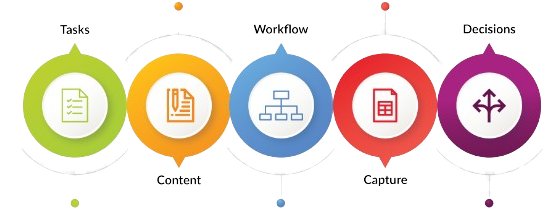
11. In IBM BPM, what is a snapshot?
Ans:
Snapshots capture an item’s state within a workflow project at one particular moment in time. Snapshots can be made in IBM Process Designer or the Workflow Center console. The Workflow Center console is where snapshot management tasks like installation, exporting, and archiving is carried out. In addition, Snapshots capture an item’s state within a workflow project at one particular moment in time. Snapshots can be made in IBM Process Designer or the Workflow Center console.
12. What abilities are necessary for a BPM developer to succeed?
Ans:
- Initially, in order to comprehend intricate business procedures and pinpoint areas for enhancement, one must possess robust analytical and problem-solving abilities.
- You must be able to create process flows that are both effective and efficient and that cater to the unique requirements of the company.
- In order to create unique applications and integrations as needed, you must possess strong programming abilities.
- In order to collaborate and communicate with other members of the development team and business stakeholders, you must possess exceptional communication and teamwork skills.
13. What function does a coach view serve in IBM BPM?
Ans:
Process Portal users can engage with a business object or service by using Coach Views, which are reusable sets of user interfaces. Coach Views can include behaviors, data bindings, layout guidelines, and one or more additional Coach Views. Users can interact with business objects or services using coach views, which are reusable sets of user interfaces. Coach views may include behaviors, data bindings, layout guidelines, and one or more additional coach views.
14. Distinguish between the functions of a process center and server.
Ans:
| Aspect | Process Center | Server | |
| Function |
Manages business processes |
Provides resources and services | |
| Role | Orchestrates workflow | Central hub for applications | |
| Example Systems | IBM BPM, Pega BPM | Apache, SQL Server | |
| Responsibilities |
Process automation, monitoring |
Data storage, application hosting |
15. In IBM BPM, what is a BPD (Business Process Diagram)?
Ans:
The fundamental component of an IBM BPM system is the Business Process Definition (BPD). Early on in the solution design process, the business process diagram (BPD) is captured as the model of the business process. It also makes it possible for the procedure to be readily changed over time.
A BPD is, in essence, a diagram that shows the process’s overall perspective and flow. Typically, the Business Process Analyst creates it after speaking with and interviewing other staff members. The business process flow and overall view are depicted in a process diagram, or PD.
16. Mention the main elements of IBM-BPM.
Ans:
Process Designer: It acts as a tool for modeling, designing, and simulating business processes as the Process Designer in the context of IBM Business Process Manager (BPM).
Process Center: It is a feature of IBM Business Process Manager (BPM) that functions as a centralized repository and management console for business processes. It is intended to support version control, governance, and cooperation during the whole business process management lifecycle.
Process Server: The Process Server is an essential part of IBM Business Process Manager (BPM) and also it is vital to the management and operation of business processes. In order to guarantee the efficient execution of business logic.
17. What role do governance play in the IBM BPM Process Center?
Ans:
In IBM BPM Process Center, cooperation and governance are essential for managing the full lifecycle of business processes, assuring consistency, regulating access, and promoting teamwork. These elements support an organization’s business process management initiatives’ effectiveness, dependability, and success.
18. Describe IBM BPM’s integration capabilities.
Ans:
IBM Business Process Manager (BPM) is engineered to provide strong integration capabilities with external systems and services, allowing enterprises to coordinate end-to-end business processes spanning various platforms and applications.
19. In what ways does IBM BPM’s Process Designer aid in the modeling?
Ans:
One tool that helps with business process modeling and design is IBM BPM (Business Process Manager)’s Process Designer. Users can visually design, document, and simulate business processes in this graphical environment.
The Process Designer’s primary attributes and functionalities are as follows: BPMN Elements, Graphical Modeling Palette, Decision tables and business rules; human tasks and service tasks, Maps of Data and Variables.
20. What are some best practices for enhancing IBM BPM applications?
Ans:
The following are some best practices for enhancing IBM BPM performance:
- Apply Best Practices for Process Modeling
- Enhance Data Management
- Use Caching to Enhance Human Task Management
- Examine and enhance Points of Integration
- Improve Scripting and Make Use of Advanced Error Handling
21. Explain the IBM BPM deployment procedures.
Ans:
Moving business process applications and the artifacts that go with them from one environment to another, usually from a development or testing environment to a production environment. It is the deployment process in IBM BPM (Business Process Manager). IBM BPM provides methodical process support for managing various deployment environments. Henceforth, it is crucial to remember that depending on the version of IBM BPM being used.
22. What distinguishes a toolkit from a process application?
Ans:
- Process App and Toolkit are terms used to describe various business process development and deployment aspects in the context of IBM BPM (Business Process Manager).
- A process application, or “process app” for short, is a container used to manage and arrange all the artifacts associated with a particular business process or group of related processes.
- In the context of IBM BPM, a toolkit is a development environment that can be used to create and modify reusable assets that can be used in different Process Apps within the IBM BPM Process Designer.
23. Describe the IBM BPM concept of adaptive process execution.
Ans:
Moving business process applications and the artifacts that go with them from one environment to another usually from a development or testing environment to a production environment is the deployment process in IBM BPM (Business Process Manager).
24. In what ways does IBM BPM vary from other BPM solutions?
Ans:
Here are some areas where IBM BPM may differ from other BPM solutions, though the precise comparison may rely on the situation and the rival products: Integration with IBM Ecosystem, Advanced Integration Capabilities, Built-in Decision management, Comprehensive Analytics and Monitoring, Collaborative Modeling and Design, Robust Security Features, Business Rules Management, Adaptive Process Execution, support for Case Management Ease of Integration with IBM cloud and more.
25. Explain the concept of business rules in IBM BPM.
Ans:
In IBM BPM (Business Process Manager), business rules play a crucial role in decision-making within business processes. Business rules are defined to encapsulate and manage decision logic, allowing organizations to separate the decision-making aspects from the process flow.
26. What has changed with IBM BPM V8 coaches?
Ans:
Coaches module has undergone a number of improvements and modifications starting with IBM BPM V8.0 and continuing through V8.5 and V8.6. The following are some broad developments and trends in the Coaches module:
- Responsive User Interfaces
- Enhanced User Interface Controls
- Integration with External Services
- Client-Side Scripting
- Accessibility Features
27. What are the various visibility types in IBM BPM?
Ans:
Visibility in IBM Business Process Manager (BPM) is the term used to describe the rights and access that are given to individuals or groups in the BPM environment for particular tasks and data.
Different visibilities are offered by IBM BPM to manage access and guarantee security. The following are some typical IBM BPM visibilities: Participant Visibility, Coach Visibility, Service Visibility, Snapshot Visibility, Data Visibility, Document Visibility.
28. Describe Sub-process.
Ans:
- A sub process is a modular unit of work within a larger business process in business process management (BPM).
- It is a method for dissecting intricate procedures into smaller, easier-to-manage parts in order to organize and control them.
29. What is a linked process?
Ans:
An appeal to start another reusable procedure, there must be at least one start event with an implementation type of none in the process that the linked process activity calls. Multiple start events are permitted. Since each process has local variable data, data mapping is necessary to transfer data into and out of the linked process.
30. What is an event-sub process?
Ans:
An event sub process is a particular kind of sub process that is activated by an event in the context of business process modeling using BPMN (Business Process Model and Notation).
The purpose of an event sub process is to intercept and manage particular events that happen while a main process is running. It makes it possible to model unusual or alternative flows depending on how events transpire.
31. Describe files in IBPM.
Ans:
A group of software tools called IBM BPM (Business Process Manager) assist companies in managing and automating their business processes. It’s possible that since then, IBM BPM’s unique features and functionalities—including file-related capabilities—have changed. For the most precise and recent information, it is therefore advised to consult the most recent IBM BPM documentation or resources.
32. What does the term “gateways” mean?
Ans:
- In business process modeling using BPMN (Business Process Model and Notation), gateways are modeling elements that control a process’s flow.
- They determine the sequence in which steps in a process should be finished based on events or circumstances.
- Gateways are essential in business processes because they allow conditional or diverging/converging behavior to be expressed, parallel flows to be combined.
33. Which version of IBM BPM is currently on the market?
Ans:
IBM Business Automation Workflow, a component of the IBM Cloud Pak for Automation, is the most recent iteration of IBM BPM. Software versions, however, are subject to frequent updates, and it’s possible that new releases have happened since then.
34. What is a rule group or rule set?
Ans:
A set of related business rules that have been grouped together for organizational and management purposes is referred to as a rule group or set in the context of business rules management.
35. What is BPC and what are the potential applications?
Ans:
- Different concepts can be referred to by BPC depending on the situation.
- The acronym is frequently used in reference to business planning and consolidation as well as business process management (BPM).
36. Discuss the Live coding and BPM concepts for a given situation.
Ans:
Business process management, or BPM, is a discipline that aims to increase an organization’s business processes’ efficacy and efficiency. In order to accomplish organizational objectives, it entails assessing, planning, executing, overseeing, and optimizing business processes. In contrast, live coding is a programming technique in which programmers create and alter code in real-time while giving a live demonstration or presentation.
37. Which process management trends are we seeing right now?
Ans:
- Digital Transformation and Automation
- Low-Code and No-Code Development
- End-To-End Process Visibility
- Customer-Centric Process Design
- Agile and Adaptive Processes
The following were some popular trends at the time:
38. Which competencies are essential for process managers?
Ans:
Process managers are essential to an organization’s management and optimization of its business processes. To be successful in their positions, they require a blend of analytical, interpersonal, and technical skills.
39. What elements make up a successful business process?
Ans:
The following are some crucial elements of a successful business process:- Clearly defined goals
- Defined Scope
- Process Map or Flowchart
- Roles and Responsibilities
- Inputs and Outputs
- Standard Operating Procedures
40. Which five steps should you take when putting a BPM strategy into practice?
Ans:
To guarantee a methodical and effective approach, putting a Business Process Management (BPM) strategy into practice usually entails a number of clearly defined steps. When putting a BPM strategy into practice, remember these five important steps: Specify goals, create a scope map, and evaluate existing procedures, Plan for Future States of Operations, Execute and Track Modifications Record, Norm, and Establish Institutions
41. What are the main obstacles facing business process management?
Ans:
The following are some typical BPM problem areas that businesses frequently encounter:
- Opposition to Change
- Absence of a definite plan and objectives
- Inadequate Process Records
- Insufficient Tools and Technology
42. Which four categories of business processes are there?
Ans:
Business processes can be divided into four primary categories according to their roles and the ways in which they support an organization’s overarching objectives. Common classifications for these kinds are as follows: Operational Processes, Management Processes, Supporting Processes and strategic Processes.
43. In what ways does IBM BPM assist with process error handling?
Ans:
- The process proceeds along the sequence line that is connected to the error event. It is noticed that in the event when an error arises when the process is executing an activity with an attached error event at the boundary.
- After errors are corrected in the flow, regular processing continues.
44. Why is governance in business process management important?
Ans:
Governance of business process management (BPM) is essential to ensuring that BPM initiatives meet regulatory requirements, contribute to long-term improvements, and are in line with organizational objectives.
45. What advantages can a decision support system offer?
Ans:
- Enhanced decision-making processes in terms of speed and efficiency.
- Increased organization control, competitiveness, and capacity for forward-thinking decision-making.
- Interpersonal dialogue and promoted education or training.
46. What does “customer-centered measures” mean?
Ans:
A company that is customer-centric prioritizes offering excellent customer service before, during, and after the sale to keep customers coming back and to build customer loyalty so they will keep doing business with the company. However, providing excellent customer service alone won’t suffice to create a customer-centric business.
47. What tasks does the process owner perform?
Ans:
- Establishing a procedure that is simple to audit.
- Assessing the connections and exchanges between the process and various other processes.
- Determining the training and documentation needs.
- Establishing and upholding any policies and guidelines.
- Putting procedures into place that are in line with the quality policy.
48. What distinguish organizational structures that are horizontal and vertical?
Ans:
Horizontal structures give their employees more freedom, while vertical structures are typified by precisely defined roles and responsibilities. In addition to causing an imbalance of power among certain employees, vertical structures can lead to a lack of direction or internal conflict.
49. Which four strategies are commonly used to manage organizational change?
Ans:
- There is no greater challenge, no greater chance of success.
- No greater danger involved in attempting to establish a new order of things.
- Reducing uncertainty Oovercoming resistance to change.
- Encouraging Workers to Participate.
50. In BPM, what is process discovery?
Ans:
A key stage of business process management (BPM) is called “process discovery,” which entails locating, recording, and comprehending the processes that are currently in place inside an organization. Producing a thorough and accurate picture of the way work is currently being done is the aim of process discovery. Initiatives for process analysis, enhancement, and optimization are built upon this data.
51. What has changed with IBM BPM version 8?
Ans:
Compared to earlier iterations, IBM BPM (Business Process Manager) V8 was a significant release that included a number of improvements and new features.
Though software is constantly updated, it’s possible that more recent versions have been made available since then. To obtain the most recent and accurate information regarding the modifications to IBM BPM.
52. What qualities distinguish cross-functional teams?
Ans:
Teams of people from various departments or functional areas within an organization who come together to work on a project or goal in common are known as cross-functional teams. Among the essential traits of cross-functional teams are:
- Multidisciplinary Cooperation
- Same Goal
- Independence and Empowerment
- Joint Accountability
- Successful Interaction
53. What are the visibility options available in IBM BPM V8?
Ans:
A number of visibility control options were available in IBM BPM V8 for process design and application development. User tasks, data visibility within business processes, and user interfaces are frequently linked to the visibility options. Coach View Visibility Conditions: Task Transparency in User Interface Design, Data Transparency and Control of Access and Visibility of User Groups.
54. In the BPM, how are versions maintained?
Ans:
The maintenance of versions, as it relates to Business Process Management (BPM) software or platforms, usually means overseeing various releases or iterations of a workflow, application, or business process model.
This guarantees controlled tracking, comparison, and deployment of changes. The versioning process is essential for preserving an unambiguous audit trail, promoting teamwork, and supporting continuous business process improvement.
55. Describe the various sub-process types.
Ans:
Sequential Sub-Processes: Sequential sub processes are carried out in a linear fashion, one after the other. The next sub process begins when the previous one is finished.
Parallel Sub-Processes: Since parallel sub processes operate concurrently, numerous tasks or activities can be completed at once. One sub process’s development is independent of the others completion.
56. What is Routing?
Ans:
Routing is, broadly speaking, the process of figuring out which direction or path to take entities, data, or information in order to get to their destination. It is an essential idea in many fields, such as business processes, networking, and logistics.
57. What does IBM-BPM mean by a durable subscription?
Ans:
Durable subscriptions in IBM BPM (Business Process Manager) are Java Message Service (JMS) subscriptions that continue to receive and store subscribed messages even in the event that the client is disconnected.
58. How can one categorize a BPD?
Ans:
- A business process’s visual flow is represented by a business process diagram (BPD) in IBM BPM (Business Process Manager).
- A BPD can be made more manageable, clear, and structured by breaking it up into multiple components.
- The following are the main elements of a typical BPD division: Lane, Swim Lanes, Activities, Gateways, Events, Artifacts, Pools and Sub-Processes.
59. What does IBM-BPM’s event-listener mean?
Ans:
An event listener is a term used to describe a mechanism within IBM Business Process Manager (BPM) that is used to record and react to events that arise during the execution of business processes. IBM BPM enables more dynamic and adaptable process execution by giving users the ability to create and utilize event listeners to handle a variety of events. Simple notifications to more intricate triggers that direct the process’s flow can all be considered events in IBM BPM.
60. What is UCA in IBM-BPM?
Ans:
“UCA” refers to User-Defined Coach Action in the context of IBM BPM (Business Process Manager). IBM BPM has a feature called User-Defined Coach Action that lets developers create unique behaviors or actions for coach views.
By creating unique actions that can be triggered in response to user interactions or particular events, developers can expand the functionality of coach views with the help of the User-Defined Coach Action (UCA). JavaScript is used in the writing of these customized action.
61. What is Event Listener for Start message?
Ans:
- An event listener connected to a business process’s start event in IBM BPM (Business Process Manager) is called a Start Message Event Listener.
- This event listener is set up to detect and react to a particular message that indicates the start of the procedure.
- Start Message Event Listeners are frequently employed in situations where a process is started by sending a predetermined message to another process.
62. What is a Coach?
Ans:
Coach is a Human activity in BPM Lombardi. When we build human service we usually include coaches which provide the interface for the end-user interaction.
63. Describe IBM-BPM routing in detail.
Ans:
The process of deciding which route a case or task should take as it moves through a business process is known as routing in IBM BPM (Business Process Manager).
Routing, a crucial component of business process management (BPM), is the process of allocating work to the appropriate people or systems at the appropriate time by using criteria such as business rules, circumstances, or other considerations.
64. What does IBM-BPM’s event-listener mean?
Ans:
An event listener is a term used to describe a mechanism within IBM Business Process Manager (BPM) that is used to record and react to events that arise during the execution of business processes. IBM BPM enables more dynamic and adaptable process execution by giving users the ability to create and utilize event listeners to handle a variety of events.
65. What is an Event Listener for Intermediate Messages?
Ans:
- An Intermediate Message Event Listener is a feature of IBM BPM (Business Process Manager) that is utilized to record and react to a particular message that appears while a business process is running.
- An Intermediate Message Event Listener is linked to an intermediate event in the process flow, as opposed to a Start Message Event Listener, which starts a process.
66. What benefits come with utilizing BPM tools?
Ans:
Tools for business process management, or BPM, provide a number of benefits to companies looking to streamline operations, increase productivity, and provide better results. Some major benefits of utilizing BPM tools are as follows: Procedure Enhancement, Openness and Visibility, uniformity and standardization, Automation of Repetitive Tasks and Improved Collaboration.
67. What distinguishes BPM systems from CRM systems?
Ans:
CRM: It is primarily concerned with managing relationships and interactions with customers. It helps businesses track and enhance client interactions while centralizing customer data.
BPM: It mainly concentrates on controlling and streamlining all business processes from start to finish inside the company.
68. In IBM-BPM, what roles does an operating system play?
Ans:
The word “operating system” in relation to IBM BPM (Business Process Manager) usually means the server or servers’ underlying operating system, on which the IBM BPM software is installed and operational. The IBM BPM application relies heavily on the operating system to provide a framework for managing and executing business processes.
69. What does IBM-BPM mean when it discusses operating system-related threads?
Ans:
A thread is a lightweight, autonomous unit of execution within a process that is used in IBM BPM. Smaller, concurrently operating parts of a process are called threads. They work separately, although they share the same resources (such memory).
A process in IBM BPM is usually a series of operations or tasks intended to accomplish a certain business objective. It’s a more advanced idea that covers the complete business process or workflow.
70. Which dojo variables are available in IBM-BPM’s Coach Designer?
Ans:
- Dojo variables are used in IBM BPM’s Coach Designer to bind data and regulate how user interface components behave inside coaches.
- Dojo variables are frequently linked to the incorporation of Dojo elements into coaches to produce dynamic and interactive user interfaces within the framework of IBM BPM.
71. What Are Undercover Agents? What are the objectives of their use?
Ans:
System agents are essential to IBM BPM’s management and upkeep of the BPM environment. They are in charge of carrying out numerous background operations that guarantee the BPM system runs well. These are some important categories of IBM BPM agents.
The agents make sure the BPM environment is running smoothly and effectively by working in the background. Although BPM developers don’t usually directly setup or engage with them, they are crucial to the BPM system’s overall operation.
72. What does IBM-BPM mean by an array?
Ans:
An “array” is a collection or list of elements that is commonly referred to informally in IBM BPM (Business Process Manager). In IBM BPM, data can be stored and managed while a business process is being carried out using arrays or structures that resemble arrays.
73. Explain about a deadlock in the context of operating systems in IBM-BPM?
Ans:
- When two or more processes are stuck waiting for one another to release a resource, it’s referred to as a deadlock in the context of operating systems, particularly IBM BPM (Business Process Manager).
- As a result, the system is unable to advance and processes become stopped, creating a circular waiting condition.
74. In IBM-BPM, what is an entry-controlled loop?
Ans:
An entry-controlled loop is a sort of loop structure in IBM Business Process Manager (BPM) that decides whether the loop body should be run before entering the loop. It’s comparable to the idea of a “while loop” seen in conventional computer languages.
75. What are the BPM Methodologies?
Ans:
Methodologies for business process management, or BPM, are systematic approaches or frameworks that are used in organizations to plan, model, implement, monitor, and improve business processes.
- Six sigma
- Lean BPM
- TQM-Total Quality Management
- Agile BGM
Here are a few well-known BPM techniques:
76. What does IBM-BPM Business Process Modeling entail?
Ans:
Using graphical notations and tools, business process modeling in IBM BPM (Business Process Manager) entails representing, designing, and analyzing business processes.
The main goal is to provide a visual depiction of business processes so that interested parties may comprehend, discuss, and enhance them. For business process modeling, IBM BPM usually employs the BPMN (Business Process Model and Notation) standard.
77. Discuss the difficulties in putting BPM systems into practice.
Ans:
Business Process Management (BPM) solution deployment can be a difficult task, and companies frequently run into a number of implementation-related problems.
- Organizational Resistance
- Lack of Executive Support
- Complexity of Processes
The following are a few typical difficulties with putting BPM solutions into practice:
78. Explain about change management when implementing a new business process.
Ans:
An essential component of putting a new business procedure into place is change management. It entails organizing, outlining, and overseeing the adjustments that the new procedure will cause within an organization.
79. What is the number of invoice types that IBM-BPM can process?
Ans:
Processing invoices in IBM BPM (Business Process Manager) usually entails creating and executing a business process that covers several phases of the invoice lifecycle. The quantity and variety of invoices that need to be processed could change depending on an organization’s unique business needs and procedures.
80. What are some typical invoice kinds that businesses would have to handle in an IBM BPM environment?
Ans:
- Vendor Invoices
- Customer Invoices
- Expense Invoices
- Credit Memos
- Recurring Invoices
- Intercompany Invoices
- Utility Invoices
Ans:
Within the framework of Business Process Management (BPM), a workflow engine is essential for coordinating and streamlining the way that business processes are carried out. The sequence of actions and activities specified in a business process is managed, controlled, and carried out by a workflow engine. In BPM, a workflow engine serves the following main goals: Execution of Business Process, Automation of Manual Tasks, Parallel and Sequential Execution and Decision Management.
82. Why is the subject of business process automation so crucial in huge organizations?Ans:
- Business process automation (BPA) is a crucial and significant topic in the setting of large enterprises for a number of reasons.
- Business process automation is the practice of streamlining and automating repetitive, manual actions and procedures inside an organization using technology.
Ans:
In business process management, analytics may be highly helpful in identifying areas where processes are not operating as efficiently as they should. It is feasible to determine where bottlenecks are occurring and modify the process to increase efficiency by examining data pertaining to business operations. Analytics can also be used to monitor the outcomes of modifications made to corporate procedures to ascertain whether or not the intended outcome is being achieved.
84. When might decision tables be utilized in BPM, and what are they?
Ans:
- A methodical and disciplined approach to tabulating complex decision logic is through the use of decision tables.
- They serve to specify guidelines and requirements that direct choices made during business operations.
- When it comes to organizing and automating business rules and decision points, decision tables are very helpful in business process management (BPM).
85. In the context of operating systems, which three types of schedulers are there?
Ans:
Schedulers are in charge of controlling how processes are executed within operating systems and choosing which processes to run when. Three primary categories of schedulers exist:
- Long-Term Planner (Work Planner)
- CPU Scheduler, or Short-Term Scheduler
- Mid-Term Planner
86. What does a MQ administrator do in an IBM-BPM system?
Ans:
An MQ (Message Queue) administrator is essential to the management and upkeep of the message queue infrastructure within IBM Business Process Manager (IBM BPM). This infrastructure enables communication between various BPM system components and external systems.
87. What are the benefits of inheritance in IBM-BPM OOPS?
Ans:
- Code Reusability
- Modularity and Maintenance
- Polymorphism
- Encapsulation
88. What are variable scope in IBM-BPM?
Ans:
The visibility and accessibility of a variable within the framework of a business process is referred to as variable scope in IBM Business Process Manager (IBM BPM). Variables are employed in process execution to store and manage data, and their scope establishes the locations at which they can be seen and altered. For IBM BPM to be used effectively in the design and implementation of business processes, it is necessary to comprehend variable scope.
89. What does IBM-BPM Procedural Programming entail?
Ans:
- Procedural programming is not the primary method used by IBM Business Process Manager (IBM BPM), instead, it is based on business process modeling. But in the context of IBM BPM, it’s critical to make clear the differences between business process modeling and procedural programming.
- A programming paradigm known as procedural programming concentrates on creating routines, or processes, which are sets of instructions or actions that must be carried out in a particular order.
90. How do other IBM software products interact with IBM MQ?
Ans:
A dependable, asynchronous messaging middleware solution called IBM MQ (Message Queue) makes it easier for different systems and applications to communicate with one another. IBM MQ is made to connect easily with other IBM software products, offering a strong messaging foundation for comprehensive solutions.


